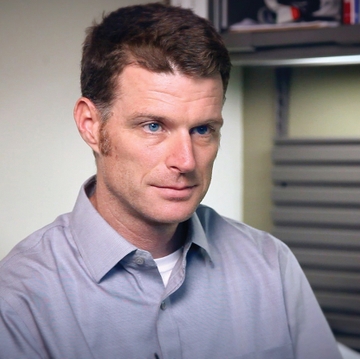Preparing for Disaster: UNM Hospital Participates in Region-Wide Emergency Training

Listening to Esketamine
FDA approves new inhaled antidepressant medication
The Food and Drug Administration's (FDA) recent approval of esketamine, a drug said to rapidly reverse symptoms of depression, has patients and their families calling University of New Mexico psychiatrists to find out when and where the new treatment will be available.
But clinicians in UNM's Department of Psychiatry & Behavioral Sciences are concerned that accounts of near-miraculous recovery from depression might cause some hype about the new treatment.
"It's great having this tool in the toolbox," says Christopher Abbott, MD, who specializes in treating severely depressed patients with electroconvulsive therapy (ECT). "This compound probably does have tremendous potential. Are we there yet? Probably not."
Although esketamine, packaged as a nasal spray that can be easily administered in a doctor's office, won FDA approval earlier this month, it is chemically similar to ketamine, an anesthetic that has been in use for decades. Over the past 20 years researchers have reported that ketamine administered intravenously sometimes alleviates depression symptoms within a few hours.
The new form of the drug requires that a patient be observed for a few hours after it is administered, because ketamine can cause dissociative symptoms and hallucinations in some patients. But that makes esketamine more convenient than IV administration of ketamine, which requires a fully equipped and staffed clinic.
Despite the promise of the new treatment, not everyone shows dramatic improvement, the UNM psychiatrists say.
Abbott has administered ketamine infusions to nine of his patients who were not responding to ECT. "Out of those nine, we've had maybe one who demonstrated a modest response, but it was not sustained," he says.
Still, says Abbott's colleague, Lucas Dunklee, MD, eskatamine is the first novel antidepressant medication to be introduced in a generation.
The earliest drugs to treat depression were introduced in the early 1950s. Prozac, the first of a class of selective serotonin reuptake inhibitors (SSRIs), came on the market in 1986, and other drugs that acted on a variety of neurotransmitters soon followed.
Evidence suggests that ketamine and its chemical cousin operate in a very different way in the brain, but many of the details are still unclear. "We still have a lot to learn about this treatment," Dunklee says. "Ketamine, even more than ECT, should be considered a treatment of last resort."
Davin Quinn, MD, who studies transcranial magnetic stimulation (TMS) as a depression treatment, suggests that esketamine might work best on patients with a particular type of depression. "A lot of the research that's been occurring over the past five years is about trying to understand what type or subtype of depression you have."
A recent study identified four types of depression symptoms that correspond to how well patients respond to treatment, Quinn says. New brain imaging techniques might someday help doctors figure out which patients will respond best to which treatment.
All three physicians agree that whether a patient is treated with esketamine, TMS or ECT, he or she will probably still need to continue taking their prescribed antidepressant.
Private ketamine infusion clinics staffed by anesthesiologists, moonlighting emergency room doctors and nurse practitioners charge around $800 for an IV ketamine treatment - far cheaper than the predicted $4,720 to $6,785 monthly tariff for twice-weekly esketamine inhaler treatments.
"We are dealing with a huge psychiatric shortage in Albuquerque," Abbott says. "If you have a loved one that's depressed, it's going to be a first-line treatment."